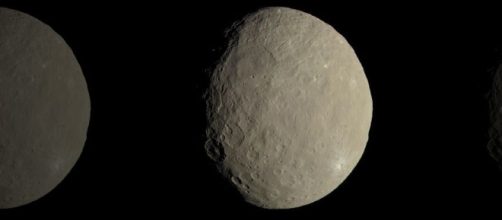Life’s building blocks have been discovered on the dwarf planet, "Ceres."
Experts at NASA claim that they have found organic molecules on a distant planet, which means life possibly exists on other planets too. NASA's Dawn spacecraft has found that these organic molecules contain carbon, oxygen, and hydrogen. Thus, it is possible that the carbon-containing building blocks belong to aliens. “The organic molecules seem to be native rather than arriving via asteroid or comet strikes,” study team members of NASA say. "Ceres is a dwarf planet that may also contain oceans, and plants.
It is also possible that aliens exist on this planet,” Michael Küppers, a planetary scientist at the European Space Astronomy Centre says.
Organics probably native
"The organic-rich areas have carbonate and ammoniated species, which is a clear indication that Ceres has endogenous material that supports life. These organic molecules are native and do not belong to any other planet,” Simone Marchi, a senior research scientist at the Southwest Research Institute in Boulder, Colorado, said in a statement. It is also believed that the organics have been destructed by the intense heat generated by the comets. But this does not mean life never existed on Ceres. In fact, these organic molecules clearly indicate that aliens did exist here years ago.
Hydrothermal activities on ‘Ceres’
“The organic molecules have undergone a series of hydrothermal reactions which is why they have lost their original form and structure to a greater extent,” De Sanctis at NASA said. “It is possible that Ceres’ nearby planets also have a life. A lot of hydrothermal activities take place on its surface every day, which is why it is not possible for any living being to exist here for weeks,” they reveal. If some hydrothermal activities take place on Ceres, then water would surely be present on this planet.
NASA’s scientists are unsure of how and when these organic molecules were generated. They are yet to find out if these exist in the interior of the surface. "We are investigating the geological and morphological settings of Ernutet to obtain high-resolution data about Ceres. For months, we [have been] working hard on this project and [will] soon discover life on Ceres or another nearby planet,” De Sanctis from NASA said.

